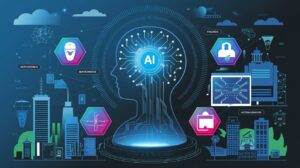IBM Quantum Computing: $150 Billion U.S. Investment to Transform Tech by 2030 marks one of the most ambitious moves in modern American tech history. IBM’s strategic investment over the next five years is not just about innovation—it’s about transforming the U.S. economy, workforce, and global leadership in the tech sector through next-gen quantum technology.
What Does IBM’s $150 Billion Investment Actually Include?
IBM announced its plan to invest a staggering $150 billion across its U.S. operations. Of that, over $30 billion is specifically focused on quantum computing and mainframe technology R&D. Here’s how the funds are expected to be distributed:

| Investment Area | Projected Funding (Approx.) | Purpose |
|---|---|---|
| Quantum Computing R&D | $30 billion | Build scalable quantum systems and algorithms |
| Mainframe and Cloud Tech | $25 billion | Enhance secure hybrid cloud infrastructure |
| Advanced Manufacturing | $40 billion | Expand chip production and fabrication capacity |
| AI & Workforce Training | $25 billion | Upskill U.S. workforce for quantum and AI jobs |
| Strategic Partnerships | $30 billion | Collaborations with U.S. universities & startups |
Why This Move Matters: A National Tech Strategy
Instead of simply reporting the amount invested, this section breaks down the strategic intent behind the funding—how IBM is aligning with U.S. national interests in tech, AI, and manufacturing.
- Rebuilding domestic chip production after supply chain shocks
- Competing with China’s tech surge in quantum and AI
- Positioning the U.S. as the world’s quantum leader

What is Quantum Computing and Why Should the U.S. Lead?
Quantum computing is not just an upgrade of today’s computers. It’s a fundamental shift—relying on qubits instead of traditional binary bits, enabling calculations that classical computers can’t handle in any realistic timeframe.
IBM Quantum Computing, Quantum vs. Classical Computing – A Quick Table
| Feature | Classical Computing | Quantum Computing |
|---|---|---|
| Data Unit | Bit (0 or 1) | Qubit (0 and 1 at the same time – superposition) |
| Speed for Complex Problems | Limited | Exponentially faster for specific applications |
| Ideal For | General tasks, business apps | Drug discovery, materials, encryption, finance |
| Current Use | Universal | Early-stage, experimental but fast-evolving |
This investment shows IBM’s intent to accelerate from experimental to real-world use cases, such as simulating molecules for new medicines or optimizing logistics across supply chains.
The Role of IBM’s Poughkeepsie Lab: A Symbol of Tech Renaissance
IBM’s Poughkeepsie, New York campus will be the centerpiece of this transformation. It will house expanded quantum hardware labs and manufacturing facilities. The move is expected to create thousands of high-skilled jobs in the U.S., attracting talent from across the globe.
IBM plans to produce scalable 100,000+ qubit systems by 2033 — a goal that would make quantum computing commercially practical.
Quantum-Ready Workforce: The Education & Talent Strategy
IBM will also fund education partnerships with over 80 U.S. universities to build a quantum-ready workforce. With support from the National Science Foundation and local governments, the aim is to upskill over 250,000 students and professionals in quantum and AI-related fields.
IBM’s Quantum Workforce Strategy
IBM Quantum Workforce Strategy
|
----------------------------------------------------------
| | |
University Grants Certification Courses AI/Quantum Internships
| | |
80+ Institutions Quantum Bootcamps Paid Training Roles
What Does This Mean for the U.S. Economy?
IBM’s investment is expected to:
- Inject over $100 billion in GDP by 2030
- Create 50,000+ jobs directly and indirectly
- Make the U.S. the global hub for quantum software & hardware
These numbers are based on IBM’s projections, as well as economic modeling by the Brookings Institution and MIT Tech Review.
How IBM’s Quantum Race Affects Global Tech
With competition from China’s Baidu, Canada’s D-Wave, and Google’s own quantum lab, IBM’s move is a bold statement. It positions the U.S. to lead secure computing, AI modeling, climate research, and financial optimization.
Final Thoughts: A $150 Billion Signal of Future Power
IBM Quantum Computing: $150 Billion U.S. Investment to Transform Tech by 2030 isn’t just a headline—it’s a signal. A signal that the future of computing is happening now, in America, and that quantum is no longer science fiction, but a strategic pillar of economic and scientific leadership.
[USnewsSphere.com / tp.]





